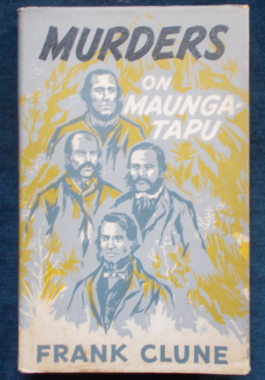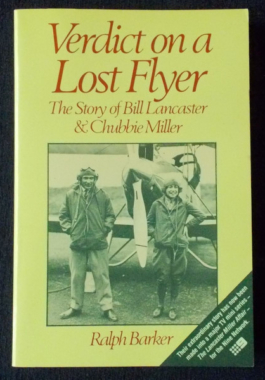-
 The case of Dr. Crippen has passed into folklore as one of the most infamous in criminal history. The year: 1910. The details: a hideously mutilated body in the cola cellar, a dockside arrest in Canada - by the means of the new wireless telegraph - of Crippen and his mistress, disguised as a boy, the trial with legal luminaries and society notables. There was enough sensation to place Crippen in the top ranks of master criminals. Yet Crippen was a quiet, meek little man, a hen-pecked husband who was always gentle with his shrewish wife, a business failure passionately in love with his competent young secretary, a bungler whose one venture into murder went wrong at every step of the way. This study examines the character of the man many believed incapable of murder and reveals the story of a mismatched marriage and a love affair that - out of its context - would have been an inspiration. Illustrated with black and white photographs. Appendix reproduces Crippen's letters to Ethel LeNeve, written from Pentonville Prison.
The case of Dr. Crippen has passed into folklore as one of the most infamous in criminal history. The year: 1910. The details: a hideously mutilated body in the cola cellar, a dockside arrest in Canada - by the means of the new wireless telegraph - of Crippen and his mistress, disguised as a boy, the trial with legal luminaries and society notables. There was enough sensation to place Crippen in the top ranks of master criminals. Yet Crippen was a quiet, meek little man, a hen-pecked husband who was always gentle with his shrewish wife, a business failure passionately in love with his competent young secretary, a bungler whose one venture into murder went wrong at every step of the way. This study examines the character of the man many believed incapable of murder and reveals the story of a mismatched marriage and a love affair that - out of its context - would have been an inspiration. Illustrated with black and white photographs. Appendix reproduces Crippen's letters to Ethel LeNeve, written from Pentonville Prison. -
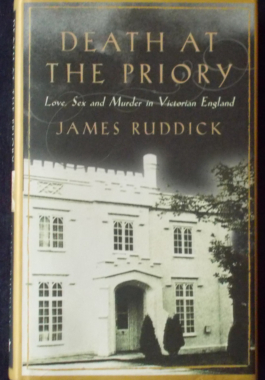 In 1875, beautiful, vivacious widow Florence Ricardo married Charles Bravo, a dashing barrister. The marriage seemed to be a happy one, although society gossips whispered that Bravo had married Florence for her fortune. Behind his charming public persona, Bravo was a brutal, vindictive man who dismissed his wife's devoted companion Mrs. Cox and regularly subjected Florence to violent abuse. Four months after the wedding, Bravo collapsed and for fifty-five hours - with some of London's most distinguished physicians in attendance - suffered a slow and agonising death. All the doctors agreed - he had been poisoned. The police were called in and everyone in the Priory, the house in South London in which he and Florence had lived, was under suspicion. The investigation was detailed and sensational and such was the public interest that it even eclipsed the coverage of the Prime Minister's negotiations with Egypt and the Prince of Wales' tour of India. The suspects included Mrs. Cox; George Griffiths, a coachman with a grudge against Bravo and at Florence Bravo herself. This is the recreation of the case with new evidence to conclusively prove who did kill Charles Bravo.
In 1875, beautiful, vivacious widow Florence Ricardo married Charles Bravo, a dashing barrister. The marriage seemed to be a happy one, although society gossips whispered that Bravo had married Florence for her fortune. Behind his charming public persona, Bravo was a brutal, vindictive man who dismissed his wife's devoted companion Mrs. Cox and regularly subjected Florence to violent abuse. Four months after the wedding, Bravo collapsed and for fifty-five hours - with some of London's most distinguished physicians in attendance - suffered a slow and agonising death. All the doctors agreed - he had been poisoned. The police were called in and everyone in the Priory, the house in South London in which he and Florence had lived, was under suspicion. The investigation was detailed and sensational and such was the public interest that it even eclipsed the coverage of the Prime Minister's negotiations with Egypt and the Prince of Wales' tour of India. The suspects included Mrs. Cox; George Griffiths, a coachman with a grudge against Bravo and at Florence Bravo herself. This is the recreation of the case with new evidence to conclusively prove who did kill Charles Bravo. -
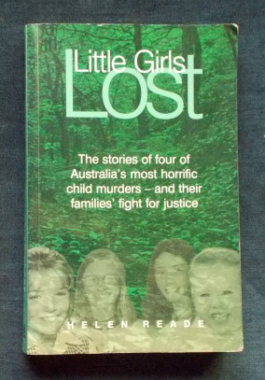 The heartbreaking stories of the murders of four girls - and a groundbreaking account of how the girls' grieving parents brought about changes in the law to ease the unbearable burden for themselves - and for the families of other homicide victims. Author Helen Reade gives the reader an intimate insight into the thoughts and actions of the victims' families as they recall the events leading up to - including - and after the appalling events. These include: the stabbing murder of 5-year-old Nicole Hanns in 1974; the sexual assault and murder of 9-year-old Ebony Simpson in 1992; and the rape and murders of Bega schoolgirls, 14-year-old Lauren Barry and her friend 16-year-old Nichole Collins in 1997. Illustrated with black and white photographs.
The heartbreaking stories of the murders of four girls - and a groundbreaking account of how the girls' grieving parents brought about changes in the law to ease the unbearable burden for themselves - and for the families of other homicide victims. Author Helen Reade gives the reader an intimate insight into the thoughts and actions of the victims' families as they recall the events leading up to - including - and after the appalling events. These include: the stabbing murder of 5-year-old Nicole Hanns in 1974; the sexual assault and murder of 9-year-old Ebony Simpson in 1992; and the rape and murders of Bega schoolgirls, 14-year-old Lauren Barry and her friend 16-year-old Nichole Collins in 1997. Illustrated with black and white photographs. -
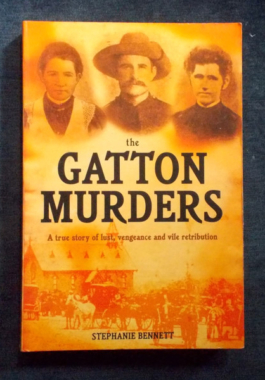 Boxing Day, 1898. Three members of the Murphy family - Michael, Ellen and Norah — are returning to the family farm after a trip in to Gatton, a small town west of Brisbane. On a deserted, moonlit road a few miles out of town they are ambushed. Their horse is killed and the three young people are taken to a remote paddock where the women are brutally raped and bludgeoned to death - and Michael is shot. By the time the police arrived the following day, locals had swarmed all over the crime scene, obliterating the evidence. What followed was a hopelessly bungled investigation and the crime remained unsolved. Fear and mistrust rocked the farming community. Theories about the perpetrator abounded. Was this the work of a sex-crazed tramp? Could a member of the Murphy family have been involved - or was revenge the motive? Stephanie Bennett's detailed examination of this baffling crime after many years spent scouring the available archival material, interviewing relatives of suspects and victims and visiting far flung areas of Queensland brings a new and disturbing theory to the surface that is both chilling and challenging. Queensland's most infamous unsolved murder.
Boxing Day, 1898. Three members of the Murphy family - Michael, Ellen and Norah — are returning to the family farm after a trip in to Gatton, a small town west of Brisbane. On a deserted, moonlit road a few miles out of town they are ambushed. Their horse is killed and the three young people are taken to a remote paddock where the women are brutally raped and bludgeoned to death - and Michael is shot. By the time the police arrived the following day, locals had swarmed all over the crime scene, obliterating the evidence. What followed was a hopelessly bungled investigation and the crime remained unsolved. Fear and mistrust rocked the farming community. Theories about the perpetrator abounded. Was this the work of a sex-crazed tramp? Could a member of the Murphy family have been involved - or was revenge the motive? Stephanie Bennett's detailed examination of this baffling crime after many years spent scouring the available archival material, interviewing relatives of suspects and victims and visiting far flung areas of Queensland brings a new and disturbing theory to the surface that is both chilling and challenging. Queensland's most infamous unsolved murder. -
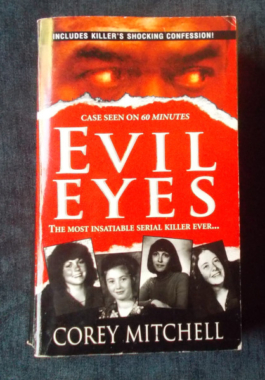 In Houston, Texas, on the morning of May 23, 1982, Carl 'Coral' Eugene Watts, 28, trapped two young women in their apartment. Only hours before, he'd killed another woman by drowning her in her bathtub. As Watts attempted to do the same to 20-year-old Lori Lister, her roommate Melinda Aguilar, 18, made a daring escape. Her courage led to Watts's arrest. Watts was a sadistic slayer with a lust for killing in a variety of ways: strangulation, suffocation, drowning and stabbing. He confessed to thirteen murders, but with no direct evidence to link him to the crimes, he managed to plea bargain his sentence down to 60 years for burglary. Due to a flaw in the Texas criminal justice system, Watts was supposed to be released from prison in 2006. Through the ceaseless efforts of investigators and the mother of one of his victims, Watts was finally tried and convicted to life in prison for a murder he had committed in Michigan in 1979. He died in 2007, still the prime suspect in approximately 90 other slayings. Experts theorise that Watts may have slain more than Ted Bundy, Jeffrey Dahmer, and John Wayne Gacy...combined. Here is the chilling story of how he almost got away with murder. Illustrated with black and white photographs.
In Houston, Texas, on the morning of May 23, 1982, Carl 'Coral' Eugene Watts, 28, trapped two young women in their apartment. Only hours before, he'd killed another woman by drowning her in her bathtub. As Watts attempted to do the same to 20-year-old Lori Lister, her roommate Melinda Aguilar, 18, made a daring escape. Her courage led to Watts's arrest. Watts was a sadistic slayer with a lust for killing in a variety of ways: strangulation, suffocation, drowning and stabbing. He confessed to thirteen murders, but with no direct evidence to link him to the crimes, he managed to plea bargain his sentence down to 60 years for burglary. Due to a flaw in the Texas criminal justice system, Watts was supposed to be released from prison in 2006. Through the ceaseless efforts of investigators and the mother of one of his victims, Watts was finally tried and convicted to life in prison for a murder he had committed in Michigan in 1979. He died in 2007, still the prime suspect in approximately 90 other slayings. Experts theorise that Watts may have slain more than Ted Bundy, Jeffrey Dahmer, and John Wayne Gacy...combined. Here is the chilling story of how he almost got away with murder. Illustrated with black and white photographs. -
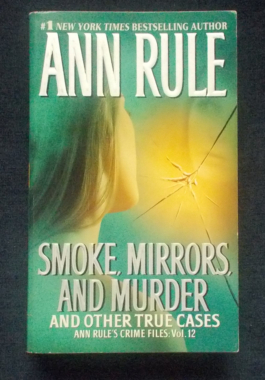 In some murder cases, the truth behind the most tragic of crimes crystallizes with relative ease. Not so with these fascinating accounts drawn from the personal files of Ann Rule, America's bestselling true-crime writer. What happens when the case itself becomes an intractable puzzle, when clues are shrouded in smoke and mirrors, and when criminals skillfully evade law enforcement in a maddening cat-and-mouse chase? An ideal family is targeted for death by the least likely enemy, who plotted their demise from behind bars.... A sexual predator hides behind multiple fake identities, eluding police for years while his past victims live in fear that he will hunt them down.... A modest preacher's wife confesses to shooting her husband after an argument -- but there's more to her shattering story than meets the eye - and more. Illustrated with black and white photographs.
In some murder cases, the truth behind the most tragic of crimes crystallizes with relative ease. Not so with these fascinating accounts drawn from the personal files of Ann Rule, America's bestselling true-crime writer. What happens when the case itself becomes an intractable puzzle, when clues are shrouded in smoke and mirrors, and when criminals skillfully evade law enforcement in a maddening cat-and-mouse chase? An ideal family is targeted for death by the least likely enemy, who plotted their demise from behind bars.... A sexual predator hides behind multiple fake identities, eluding police for years while his past victims live in fear that he will hunt them down.... A modest preacher's wife confesses to shooting her husband after an argument -- but there's more to her shattering story than meets the eye - and more. Illustrated with black and white photographs. -

Out Of Control: Steven Long
$12.00Clara and David Harris were married on Valentine's Day. Young and in love, they developed a thriving dental business, built a half-million dollar mansion and raised the perfect family. Then whispers of David's affair with his office assistant began to circulate through their exclusive Houston social circle. A private detective confirmed the rumours. When Clara saw David with his mistress, she attacked the woman - then got behind the wheel of her silver Mercedes and crushed her husband to death under its wheels. A moment of madness - or a calculated crime of passion? What the headlines ultimately revealed was a high profile marriage running on empty, marital infidelity, a woman's deadly passion and the private hell behind the public life of the rich and privileged. With 8 pages of black and white photographs.



